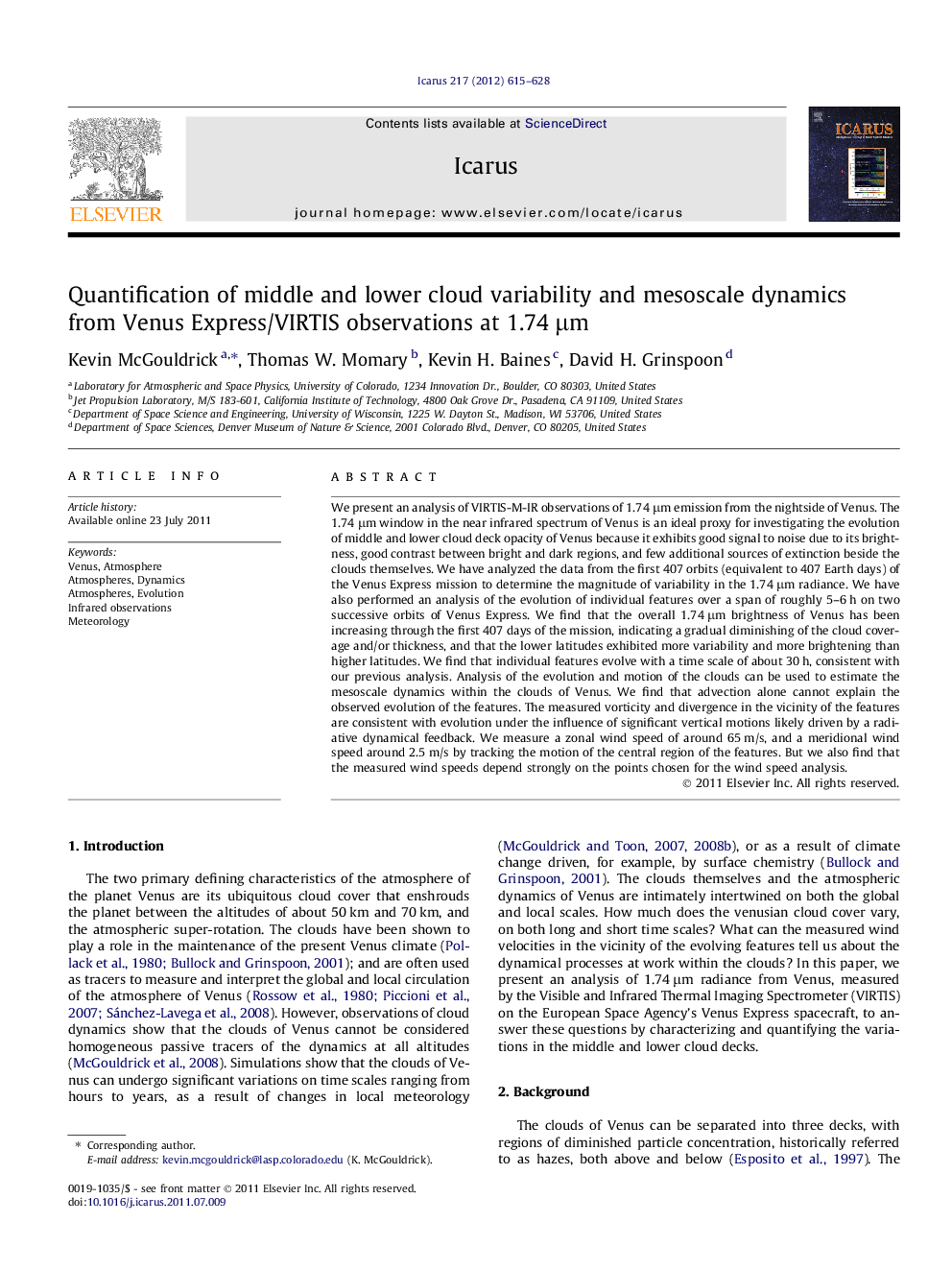| Article ID | Journal | Published Year | Pages | File Type |
|---|---|---|---|---|
| 1773687 | Icarus | 2012 | 14 Pages |
We present an analysis of VIRTIS-M-IR observations of 1.74 μm emission from the nightside of Venus. The 1.74 μm window in the near infrared spectrum of Venus is an ideal proxy for investigating the evolution of middle and lower cloud deck opacity of Venus because it exhibits good signal to noise due to its brightness, good contrast between bright and dark regions, and few additional sources of extinction beside the clouds themselves. We have analyzed the data from the first 407 orbits (equivalent to 407 Earth days) of the Venus Express mission to determine the magnitude of variability in the 1.74 μm radiance. We have also performed an analysis of the evolution of individual features over a span of roughly 5–6 h on two successive orbits of Venus Express. We find that the overall 1.74 μm brightness of Venus has been increasing through the first 407 days of the mission, indicating a gradual diminishing of the cloud coverage and/or thickness, and that the lower latitudes exhibited more variability and more brightening than higher latitudes. We find that individual features evolve with a time scale of about 30 h, consistent with our previous analysis. Analysis of the evolution and motion of the clouds can be used to estimate the mesoscale dynamics within the clouds of Venus. We find that advection alone cannot explain the observed evolution of the features. The measured vorticity and divergence in the vicinity of the features are consistent with evolution under the influence of significant vertical motions likely driven by a radiative dynamical feedback. We measure a zonal wind speed of around 65 m/s, and a meridional wind speed around 2.5 m/s by tracking the motion of the central region of the features. But we also find that the measured wind speeds depend strongly on the points chosen for the wind speed analysis.
► We analyze cloud features observed by Venus Express/VIRTIS during orbits 383 and 384. ► We measure the evolution and motion of these features at a wavelength of 1.74 μm. ► Typical lifetimes of these features are found to be about 30 h. ► Measured wind speeds are consistent with previous analyses by others. ► Vorticity and divergence in the vicinity of the features is also measured.
